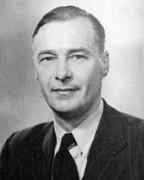Person: Hall, Philip

Philip Hall was the main impetus behind the British school of group theory and the growth of group theory to be one of the major mathematical topics of the 20th Century was largely due to him.
Mathematical Profile (Excerpt):
- Laura called herself Mrs Hall and she brought Philip up in her parents home in Hampstead, London, until he was seven years old.
- Philip attended Sunday School and was baptised in 1911.
- Hall entered Christ's Hospital in May 1915 at age eleven.
- It was at Christ's Hospital that Hall came to love mathematics.
- Hall went up to King's College Cambridge in October 1922 having won an Open Foundation Scholarship in December 1921.
- The 'Mr Littlewood' that Hall referred to is Dudley Littlewood.
- Richmond was also on the staff when Hall arrived in Cambridge, but he retired in 1923.
- Hall's interest in group theory came from Burnside's book which he was encouraged to read by Arthur Berry, the Assistant Tutor in Mathematics at King's College.
- It was a year in which Hall wondered about his future, unsure whether to try for an academic career or not.
- In October 1926 Hall submitted an essay The Isomorphisms of Abelian Groups as his attempt to gain a Fellowship.
- It shows many signs of having been written hurriedly, even to the extent that it ends in the middle of a proof! It is fairly clear that Hall only made the decision to try for an academic career after much thought and late on in terms of writing up his dissertation.
- Despite its deficiencies, it shows that already Hall was way ahead of his time in his approach to group theory and certainly nobody at Cambridge could have been in a position to properly evaluate the work.
- It is a trait which Hall did not retain.
- Despite having written the work hurriedly, his quality shone through and Hall was elected to a Fellowship at King's College in March 1927.
- Returning to Cambridge in September 1927 to take up the Fellowship at King's he made an important discovery in group theory, generalising the Sylow theorems for finite soluble groups to prove what are now called Hall's theorems.
- There is then a rather surprising gap in Hall's publication record.
- Hall certainly made 'a bit of an effort' for in 1932 he wrote what is perhaps his most famous paper A contribution to the theory of groups of prime power order.
- In it, in addition to its main aims of developing the theory of regular ppp-groups, Hall introduces the commutator calculus, commutator collection, and the connection between ppp-groups and Lie rings.
- In June 1939 Hall gave a series of lectures at a small meeting at the Mathematical Institute in Göttingen.
- Four of Hall's lectures were published as separate papers in Crelle's Journal.
- In The classification of prime-power groups Hall introduces an equivalence relation called isoclinism to aid the classification of prime power groups.
- Hall returned to King's College Cambridge in July 1945.
- In 1946 he wrote letters to the authorities supporting Hasse's reinstatement, and also wrote encouraging letters to Hasse who had shown great kindness to Hall in 1939.
- Hall was promoted to Reader at Cambridge in 1949, then in 1953, after Mordell retired from the Sadleirian Chair, Hall was appointed to succeed him.
- In 1956 Hall published, jointly with Graham Higman, On the p-length of p-soluble groups and reduction theorems for Burnside's problem.
- In August 1957 Hall gave a series of lectures at the Canadian Mathematical Congress Summer Seminar in Edmonton, Canada, on nilpotent groups which have had great influence ever since.
- In it Hall considers many different classes of groups and investigates whether the Frattini subgroup of groups in these classes needs to be nilpotent.
- In On non-strictly simple groups published in 1963 Hall established the existence of simple groups which were the infinite union of a chain of subgroups, each normal in the next.
- The paper, like so many of Hall's papers, introduces important ideas which are widely applicable.
- Hall received many honours for his work.
- Hall was a great supporter of the London Mathematical Society, and he was awarded its Senior Berwick Prize (1958) and the De Morgan Medal and Larmor Prize in 1965.
- In this talk Hall spoke about word problems in general and specifically mentioned word problems for groups, semigroups, and cancellative semigroups.
- Hall's elegant works (both in content and exposition) are allowed to speak for themselves ...
- We have made various comments about Hall's character in this article, but we should end by making a few more.
Born 11 April 1904, Hampstead, London, England. Died 30 December 1982, Cambridge, England.
View full biography at MacTutor
Tags relevant for this person:
Algebra, Group Theory, Origin England, Physics, Puzzles And Problems
Thank you to the contributors under CC BY-SA 4.0! 

- Github:
-

- non-Github:
- @J-J-O'Connor
- @E-F-Robertson
References
Adapted from other CC BY-SA 4.0 Sources:
- O’Connor, John J; Robertson, Edmund F: MacTutor History of Mathematics Archive
